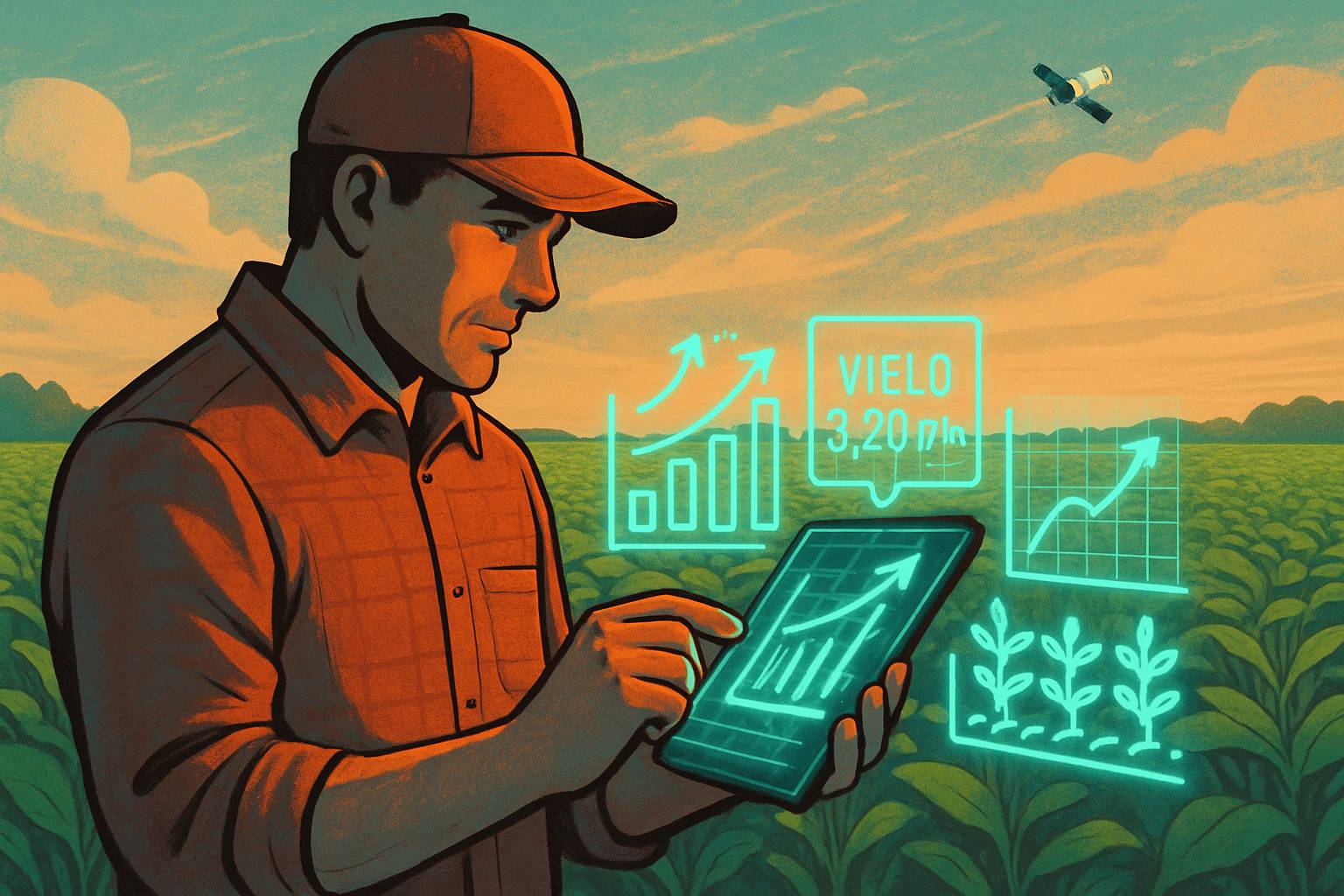
AI CERTS
10 hours ago
Precision Agriculture Gets 95% Yield Forecasts From Space
Market Needs Align
Volatile weather, market swings, and geopolitical shocks amplify risk across global supply chains. Therefore, stakeholders crave timely, reliable production signals. Additionally, market research shows double-digit growth for AI-enabled farm tools, underscoring demand. In contrast, manual crop surveys remain slow and costly.

Two key pressures drive adoption:
- Commodity traders need weekly yield updates to hedge positions responsibly.
- Insurers seek objective metrics to price parametric policies fairly.
These factors underscore commercial urgency. Nevertheless, technical rigour remains essential. The section reveals why the market pulls hard. Yet scientific constraints still apply.
The pressure for trusted insights grows. Subsequently, data supply innovation steps forward.
Data Sources Multiply
Optical constellations such as Sentinel-2 and PlanetScope revisit fields almost daily. Furthermore, radar instruments penetrate clouds, offering moisture and structure cues. Combined, these streams generate dense Satellite Data for modelling.
Vendors now fuse imagery with weather, soil, and management layers. Consequently, signal-to-noise improves across diverse geographies. Planet Labs recently extended its product suite with automated field boundaries, easing model preprocessing.
Academic surveys report R² scores up to 0.95 for within-field soybean maps. However, experts caution that many studies validate within the same season. Therefore, true forecasting strength may be lower.
Expanded sensors bolster Precision Agriculture ambitions. Still, method choices determine actual accuracy. This reality leads naturally to modelling debates.
Modeling Approaches Evolve
Random forests once dominated yield prediction. Meanwhile, gradient boosting and deep ensembles now top leaderboards. Additionally, texture metrics and solar-induced fluorescence add nuanced crop health cues.
Researchers increasingly deploy multi-modal architectures that ingest Satellite Data, climate histories, and management records. Moreover, vendors like SatYield claim 95 percent accuracy using proprietary fusion pipelines.
David Lobell’s Stanford team compared classical statistics with three machine-learning methods. Consequently, every algorithm outperformed the baseline, delivering roughly 75 percent accuracy two months before harvest in Australia.
Modelling sophistication advances Precision Agriculture promises. Nevertheless, validation strategy determines credibility. Hence, the next section inspects accuracy rhetoric.
Accuracy Claims Scrutinized
Marketing brochures trumpet “over 95 percent accuracy.” However, Filippi et al. reveal that many studies use random cross-validation within a single season. In contrast, temporal holdout tests across years often cut performance dramatically.
Experts urge five verification steps:
- Request the exact error metric, not vague “accuracy.”
- Confirm out-of-season validation protocols.
- Identify crop, region, and sample sizes.
- Seek independent audits or blinded datasets.
- Review confidence intervals alongside headline numbers.
Consequently, buyers should interrogate each claim rigorously. Moreover, professionals can formalize skills with the AI+ Data™ certification.
Transparent testing strengthens Precision Agriculture trust. The analysis also sets the stage for commercial rollout discussions.
Business Adoption Grows
Agrochemical giants partner with imagery providers to scale models globally. For example, Syngenta and BASF integrate Planet’s biomass indices into field advisory platforms. Additionally, insurers evaluate Predictive Analytics outputs when structuring crop protection products.
Agritech startups target specialty crops. HSAT’s CocoaGPT touts 95 percent accuracy for West African plantations. Meanwhile, EOS Data Analytics markets yield dashboards on AWS Marketplace, blending Satellite Data and weather feeds.
Farmers adopt insights when tools fit workflows and prove savings. Consequently, early adopters report fertilizer cuts and logistics gains. However, mixed results in smallholder contexts reveal ongoing gaps.
Commercial traction validates Precision Agriculture momentum. Yet sustainable impact needs proven generalisation. The future section explores remaining hurdles.
Future Outlook Considerations
Methodological rigor will likely improve through open benchmarks and third-party audits. Moreover, competition drives vendors to publish performance on blind seasons. Consequently, confidence in Predictive Analytics should rise.
Edge computing on autonomous machinery could deliver sub-meter insights. Additionally, policy incentives for climate reporting may mandate transparent yield verification. In contrast, data privacy laws might restrict imagery fusion with farm records.
Experts predict self-updating models that learn continuously from harvester monitors. Furthermore, multi-modal transformers promise stronger cross-region transfer.
These innovations will embed Precision Agriculture deeper into strategic planning. However, vigilance against over-claiming remains critical. Responsible adoption will balance hype with evidence.
Key Takeaway Summary
Satellite revolutions supply rich signals. Robust models unlock actionable yield forecasts. Nevertheless, validation discipline underpins trust.
Transition Forward
The industry now moves from experimentation to accountability, demanding clear metrics and skilled practitioners.
Conclusion And Action
AI-driven yield forecasting delivers unprecedented visibility across supply chains. Moreover, Precision Agriculture platforms can inform input use, insurance, and trade strategies. However, stakeholders must demand transparent methods, out-of-sample tests, and independent audits. Consequently, organisations should invest in talent able to interrogate model claims and manage geospatial pipelines.
Professionals seeking mastery can validate their skills through the AI+ Data™ credential. Take the next step, deepen expertise, and turn orbital insight into sustainable farm value.



